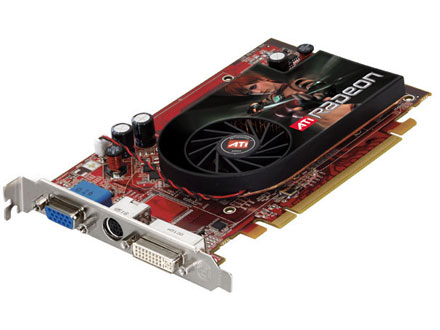Upgrade 101: Video Card
So you want to upgrade your computer and you’re thinking a video card is the answer. But you really don’t know much about video cards. Let’s fix that!

First – what is a video card?
A video card (also known as a graphics card or video controller) is an internal expansion board that allows a monitor (or other compatible display device such as a flat screen tv) to display images\information from a computer. These cards come in a few different types with the most common being PCIe or PCI. The video card fits into the appropriate corresponding slot on the motherboard. Some motherboards come with video built into the board. These can usually still be upgraded with an expansion video card.
The Technical Details (for fellow geeks)
A video card is made up of 3 main components: the GPU, RAM, and the heatsink/fan. The GPU (graphics processing unit) is the processor chip located on the video card that handles the 2D/3D graphic processing. This allows the computer CPU (central processing unit) to be free to handle other computing tasks. The next component is RAM (random access memory). RAM helps a video card by allowing it to hold image data in memory, rather than having to recalculate it every frame. Modern video cards typically use 3 types of RAM: DDR2, GDDR3, and GDDR5. DDR2 is the slowest, and GDDR5 is the fastest. When comparing a video card with a large amount of slower RAM to a smaller amount of faster RAM, the card with the faster RAM will usually perform better. Typical video cards have 1 – 2GB of RAM. Higher end video cards (for gaming, video editing, 3D modeling, etc.) can have 4GB of RAM or more! The final component is the heatsink/fan. All video cards will some type of heatsink attached to them to reduce the chances of the GPU overheating. Higher end video cards will have larger heatsinks or even fan/heatsink combinations as they tend to generate more heat or are installed in higher end computers that also tend to generate more heat.
Video cards usually come with at least a couple of different types of ports for connecting display devices. The most common ones today are standard VGA (found on nearly every monitor), HDMI (high definition multimedia interface) and DVI (digital visual interface) which are the predominant protocols in mid to higher end monitors and flat screen tvs. S-Video can also be found on some niche specific cards.
The Nitty Gritty (what you need to know)
So now that you know what a video card is and does, should you upgrade yours? Well let’s see:
Are you playing graphically intensive games that have to be on the lowest video settings to be playable without “chugging (frequent pauses in the action where the computer has to catch up)”?
Are you editing large picture files or high-definition video?
Are you using (or attempting to) use 3D modeling applications such as CAD or Adobe Creative Suite?
Are you not able to watch your DVDs or other movies in the best resolution?
Do you want to use multiple displays?
If you answered “Yes” to any of those questions, then a video card upgrade could be the solution to your problems. To be sure, we recommend having your computer looked at by your local computing experts at Geek Easy Computers. We can then examine your hardware and present you with a concise upgrade path that will fit your needs and budget. Don’t wonder. Ask us! We are here to make your technology easier!